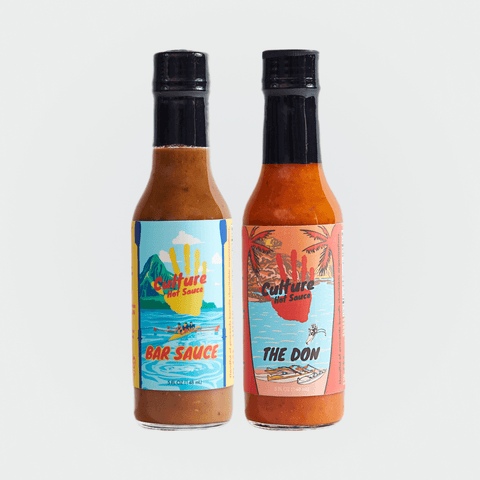Title: Exploring the Scoville Heat Unit Scale: Origin, History, and Function
Introduction: Chili peppers, those fiery little fruits, have been tantalizing taste buds for centuries. Whether you're a spice aficionado or prefer milder flavors, understanding the heat of chili peppers is essential in navigating the culinary world. Enter the Scoville Heat Unit (SHU) scale – a system devised to measure the spiciness of peppers. In this blog post, we'll delve into the origins, history, and mechanics of the Scoville scale, shedding light on how it works and its significance in the world of spicy foods.
Origin and History: The story of the Scoville scale begins in 1912 with Wilbur Scoville, a pharmacist from Connecticut, USA. Seeking a standardized method to measure the heat of peppers, Scoville developed what would become known as the Scoville Organoleptic Test. This test involved diluting pepper extracts in sugar water and having a panel of tasters determine at what point the heat became undetectable.
Scoville's method relied on subjective human perception, with the results reported in Scoville Heat Units (SHU), named in his honor. For example, a pepper rated at 5,000 SHU means that it would need to be diluted 5,000 times before the heat is no longer detectable.
While Scoville's test provided a groundbreaking approach to measuring chili pepper heat, it had limitations. The results could vary depending on the panel of tasters' sensitivity to capsaicin, the compound responsible for the heat in peppers. Additionally, the test was time-consuming and imprecise.
Evolution and Modernization: Over time, advancements in technology and analytical chemistry led to the development of more accurate and objective methods for measuring capsaicin levels. High-performance liquid chromatography (HPLC) emerged as the gold standard for quantifying capsaicinoids, the group of compounds responsible for pepper heat.
Today, the Scoville scale is often calculated based on HPLC analysis, which provides precise measurements of capsaicinoid content in peppers. The results are then converted into Scoville Heat Units, allowing for a standardized and reliable measure of pepper heat.
How It Works: The Scoville scale measures the concentration of capsaicinoids in chili peppers, primarily capsaicin. Capsaicin interacts with sensory receptors in the mouth and throat, triggering the perception of heat or spice. The higher the concentration of capsaicinoids, the spicier the pepper.
To determine a pepper's SHU rating, its extract is diluted in sugar water until the heat is no longer detectable by a panel of tasters. The degree of dilution needed corresponds to its Scoville Heat Units. For example, a pepper with 100,000 SHU would need to be diluted 100,000 times before its heat becomes undetectable.
Facts and Trivia:
- The Carolina Reaper for about 10 years held the Guinness World Record for the hottest chili pepper, with an average SHU of over 1.6 million but recently as of August 2023 Guinness World Records recognized 'Pepper X' with an average of 2,693,000 SHU to be the new world record holder.
- Bell peppers, commonly used in cooking for their mild flavor, rate at 0 SHU since they contain no capsaicin.
- The Scoville scale isn't limited to peppers; it can also be used to measure the heat of other spicy foods and products, such as hot sauces and salsas.
Conclusion: The Scoville Heat Unit scale has been an invaluable tool for chili pepper enthusiasts, chefs, and food manufacturers worldwide. From its humble beginnings with Wilbur Scoville to its modern applications in analytical chemistry, the scale has evolved to provide a standardized measure of pepper heat. Whether you're seeking a mild kick or a fiery inferno, the Scoville scale offers a common language for navigating the diverse world of spicy foods.
As we continue to explore and appreciate the rich tapestry of flavors in culinary traditions around the globe, let's raise a toast – or perhaps a glass of milk – to the humble chili pepper and the spicy journey it takes us on.





